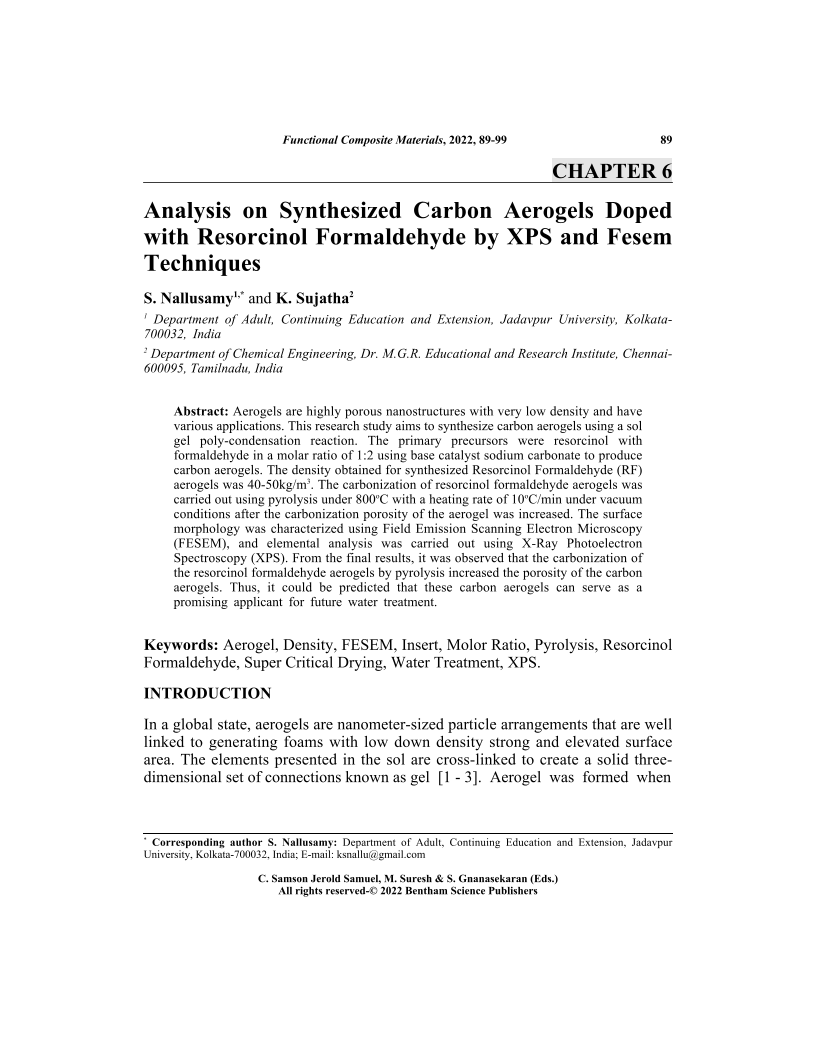Analysis on Synthesized Carbon Aerogels Doped with Resorcinol Formaldehyde by XPS and Fesem Techniques

- Authors: S. Nallusamy1, K. Sujatha2
-
View Affiliations Hide Affiliations1 Department of Adult, Continuing Education and Extension, Jadavpur University, Kolkata 700032, India 2 Department of Chemical Engineering, Dr. M.G.R. Educational and Research Institute, Chennai-600095, Tamilnadu, India
- Source: Functional Composite Materials: Manufacturing Technology and Experimental Application , pp 89-99
- Publication Date: April 2022
- Language: English
Analysis on Synthesized Carbon Aerogels Doped with Resorcinol Formaldehyde by XPS and Fesem Techniques, Page 1 of 1
< Previous page | Next page > /docserver/preview/fulltext/9789815039894/chap6-1.gif
nbsp;Aerogels are highly porous nanostructures with very low density and have various applications. This research study aims to synthesize carbon aerogels using a sol gel poly-condensation reaction. The primary precursors were resorcinol with formaldehyde in a molar ratio of 1:2 using base catalyst sodium carbonate to produce carbon aerogels. The density obtained for synthesized Resorcinol Formaldehyde (RF) aerogels was 40-50kg/m3 . The carbonization of resorcinol formaldehyde aerogels was carried out using pyrolysis under 800oC with a heating rate of 10oC/min under vacuum conditions after the carbonization porosity of the aerogel was increased. The surface morphology was characterized using Field Emission Scanning Electron Microscopy (FESEM), and elemental analysis was carried out using X-Ray Photoelectron Spectroscopy (XPS). From the final results, it was observed that the carbonization of the resorcinol formaldehyde aerogels by pyrolysis increased the porosity of the carbon aerogels. Thus, it could be predicted that these carbon aerogels can serve as a promising applicant for future water treatment. nbsp;
-
From This Site
/content/books/9789815039894.chap6dcterms_subject,pub_keyword-contentType:Journal -contentType:Figure -contentType:Table -contentType:SupplementaryData105

